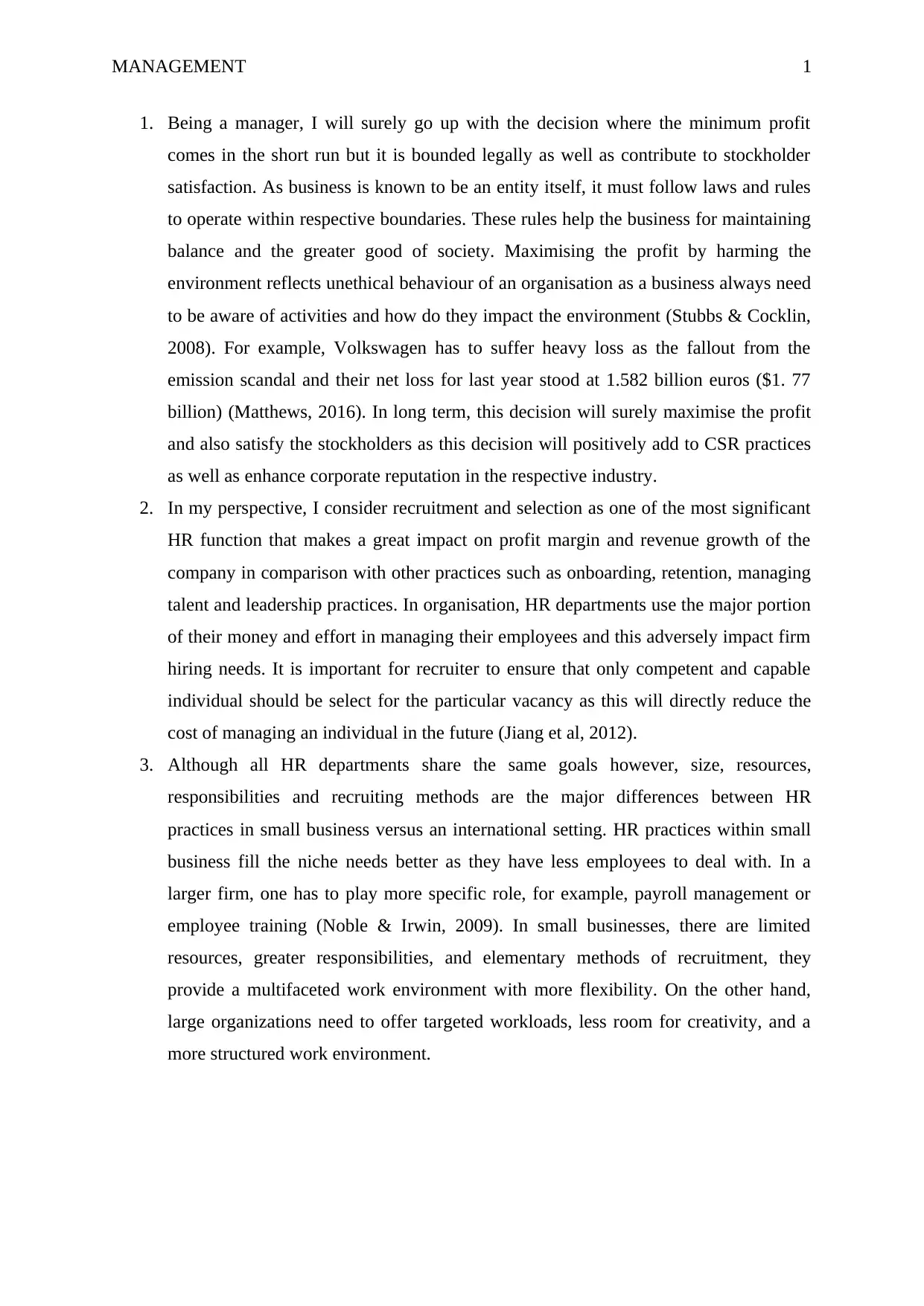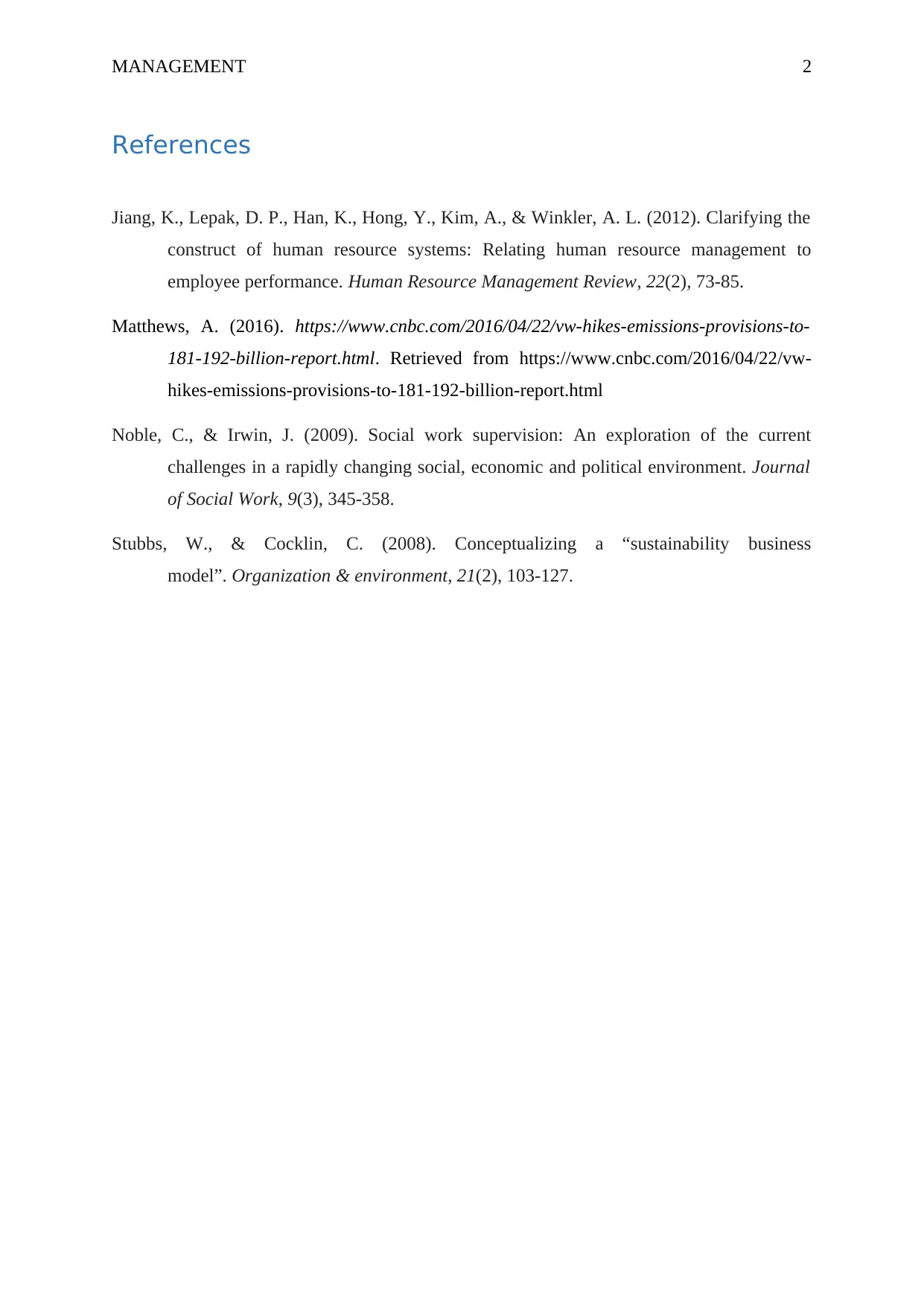Human Resource Management Report: Ethical Decision Making in Business
VerifiedAdded on 2023/04/08
|3
|489
|223
Report
AI Summary
This report delves into the critical aspects of human resource management (HRM) with a focus on ethical considerations and their impact on business profitability. The report begins by addressing the ethical implications of business decisions, emphasizing the importance of adhering to legal and ethical standards, even if it means short-term profit reduction. It highlights the long-term benefits of ethical practices, such as enhanced corporate reputation and stakeholder satisfaction. The report then examines the significance of recruitment and selection processes, emphasizing their role in reducing future costs by selecting competent employees. Furthermore, the report contrasts HR practices in small businesses with those in large organizations, highlighting differences in resources, responsibilities, and recruitment methods. Small businesses often offer a more multifaceted work environment, while large organizations provide a more structured setting. The report utilizes case studies and references to support its arguments, providing a comprehensive overview of ethical HRM practices.
1 out of 3









![[object Object]](/_next/static/media/star-bottom.7253800d.svg)